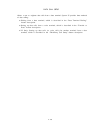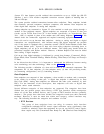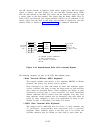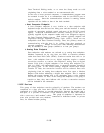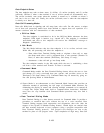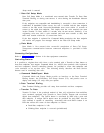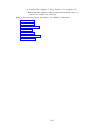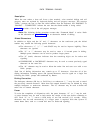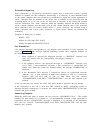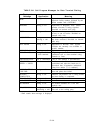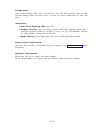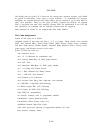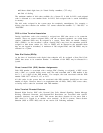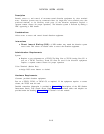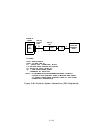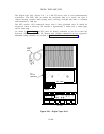End-to-End Signaling:
Data connections to off-premises destinations require that a conversion resource (pooled
modem) be inserted into the connection. Occasionally it is necessary to send additional tones
to the remote endpoint after the connection is established to signal the remote equipment. A
“mark” character must be included on the DIAL: line to indicate to call processing that the
remaining digits are to be sent to the far end prior to insertion of the conversion resource
into the connection. The “mark” character marks the boundary between the digits dialed to
reach a distant endpoint, and the digits used by that distant endpoint after it has answered.
Pause characters may and usually should follow a “mark” character. An example using a
“mark” character and several pause characters is shown below. Dashes are included for
readability.
Examples of dialing are as follows:
● DIAL: 3478
●
DIAL: 9-1-(201 )-946 -8123,, $,5678
●
DIAL: 9%946-8123%%$%5678%137%110
Call Disposition:
Call progress messages corresponding to call progress tones provided to voice terminals are
listed in Table 2-H. The message supplied (indicating reorder, busy, ringback) depends on
the disposition of the call.
1. When ringback is received the displayed message is “RINGING” (internal calls
only). For outside calls, the corresponding call progress message is
“DIALING . . . .“.
2. If the endpoint answers, the displayed message is
“ANSWERED” (internal calls
only). Then, if the handshake succeeds, a data connection is established. For
outside calls, when the system has finished dialing, the message “COMPLETED” is
displayed.
3. If the handshake fails because a connection cannot be established between
endpoints (e.g.,
a port optioned at 9600 baud attempts to talk to a conversion
resource
that can only talk at 300 or 1200 baud), the user receives
“INCOMPATIBLE FAR END,”
“DISCONNECTED,’” and the data endpoint goes
on-hook.
If the far end does not answer, the caller must press Break to terminate the call attempt.
If the disposition of the call is such that TRY AGAIN or BUSY (indicating reorder or
intercept and busy respectively) is received, the switch sends “DISCONNECTED” to the data
terminal that goes on-hook.
Answering Endpoint:
When the dialed end point is alerted, the user receives “INCOMING CALL-”. (The called
terminal will auto-answer if it is turned on. ) If the handshake succeeds, a data connection is
established and the “CONNECTED” message is displayed if so optioned. If the handshake
fails, the user receives
“INCOMPATIBLE FAR END, DISCONNECTED” and the data
endpoint goes on-hook.
2-113



